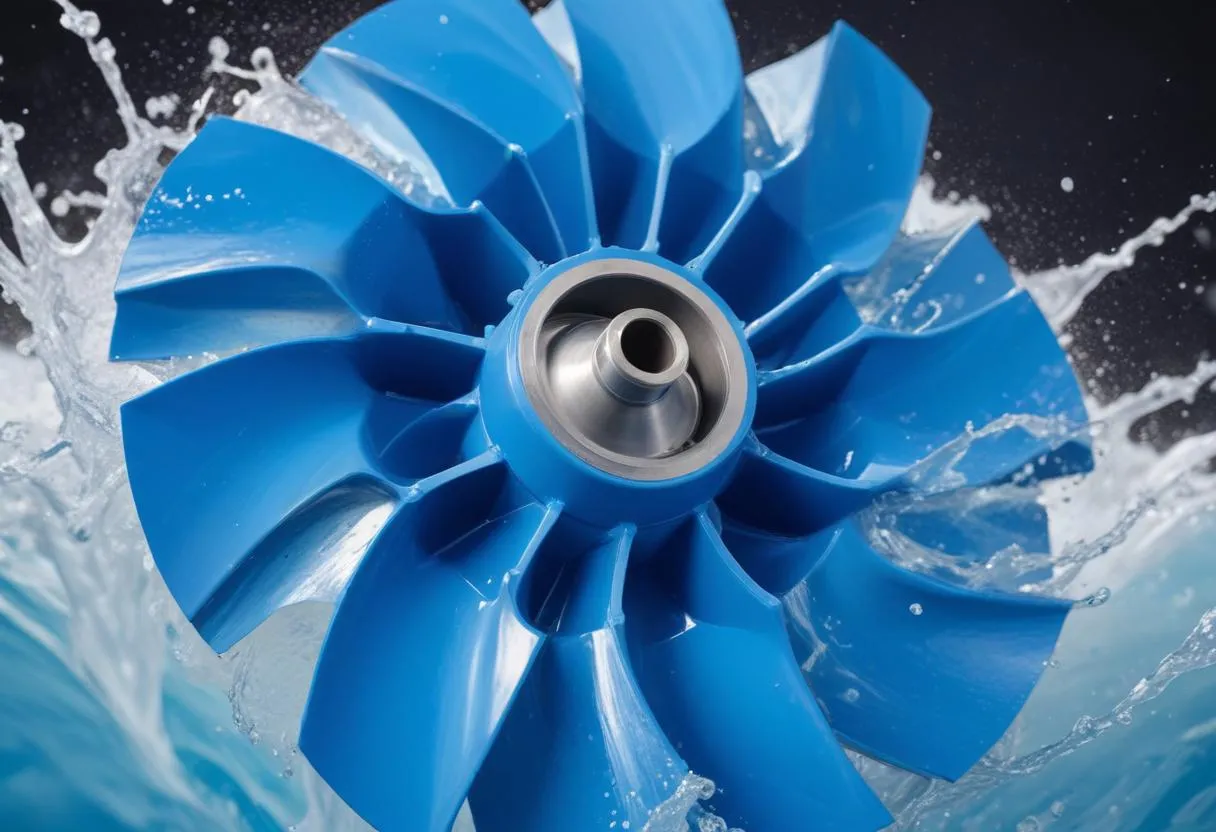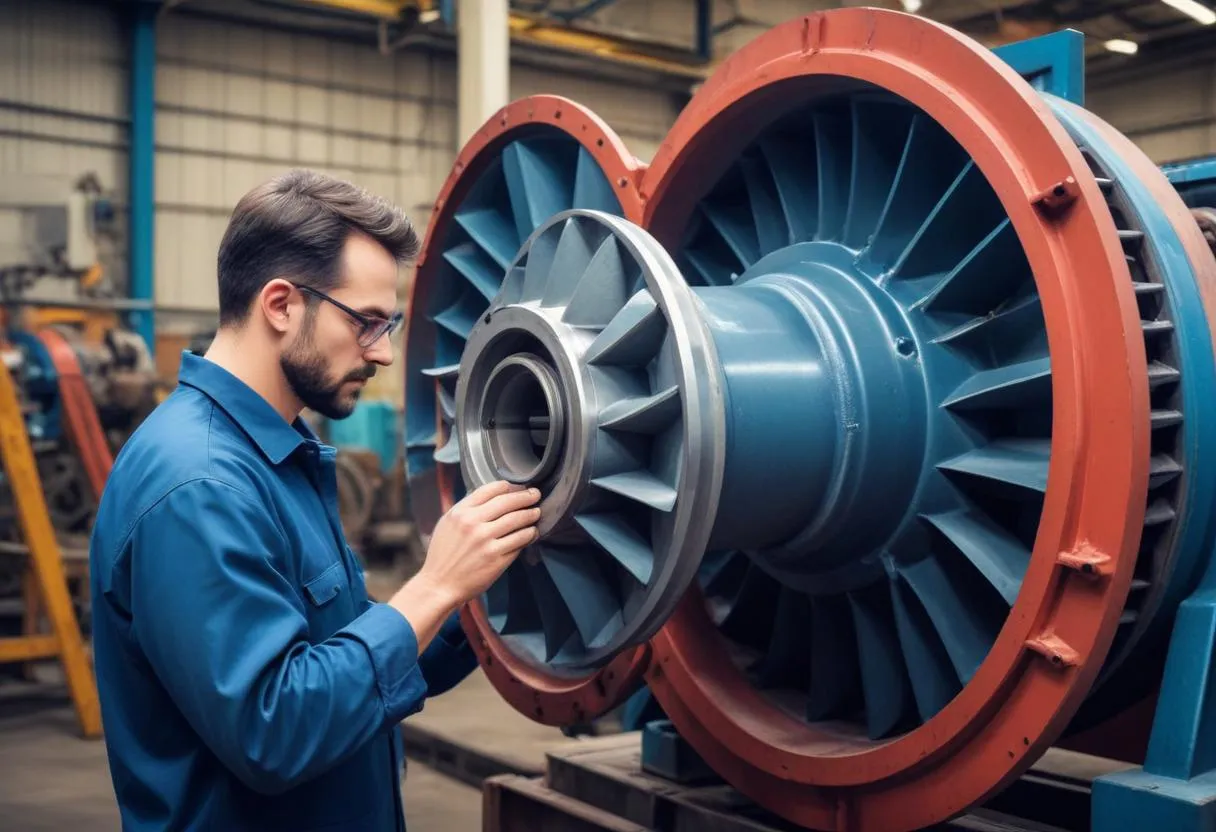 Pumps are versatile machines used in various industries and for a plethora of applications. Broadly, pumps can be categorized into two basic types based on their operational mechanisms: dynamic (or kinetic) pumps and positive displacement pumps. Each of these categories has multiple types of pumps designed to suit specific applications ranging from wastewater treatment to oil and gas production.
Pumps are versatile machines used in various industries and for a plethora of applications. Broadly, pumps can be categorized into two basic types based on their operational mechanisms: dynamic (or kinetic) pumps and positive displacement pumps. Each of these categories has multiple types of pumps designed to suit specific applications ranging from wastewater treatment to oil and gas production.
Dynamic pumps impart velocity and pressure to a fluid as it moves through the pump through the action of a rotating impeller. They are commonly used in large flow applications. Within dynamic pumps, there are several variations:
- Centrifugal Pumps: Utilized for large discharge of liquids in industries such as water treatment, agriculture, and municipal water supply.
- Vertical Turbine Pumps: Often employed in firefighting, deep well drilling, and irrigation.
- Submersible Pumps: Preferred for underground applications such as draining water from mines or deep wells.
Positive displacement pumps, on the other hand, move a fixed amount of fluid with each cycle or stroke, making them ideal for handling viscous fluids or maintaining a precise flow rate. Common types include:
- Diaphragm Pumps: Ideal for handling corrosive, abrasive, or flammable substances, often used in chemical and food processing.
- Gear Pumps: Employed in hydraulic fluid power applications.
- Screw Pumps: Used for moving large volumes of viscous fluids in industries like oil extraction or wastewater treatment.
- Piston Pumps: Commonly used in oil and gas industries, particularly for high pressure fluid transfer.
Each type of pump is tailored to a specific situation, such as delivering high viscosity fluids, dealing with sensitive solids, or operating in harsh environments. Pumps like screw pumps and gear pumps are frequently found in the chemical and petrochemical sectors due to their ability to handle high-viscosity fluids efficiently. Conversely, sectors requiring high-volume, low-viscosity applications—like water utilities or agriculture—often use centrifugal pumps.
The applications of pumps are as diverse as the types available. Here’s a brief overview of common applications tailored for each type:
| Type of Pump | Applications |
|---|---|
| Centrifugal Pumps | Water supply, irrigation, HVAC, fire protection systems |
| Diaphragm Pumps | Chemical transfer, wastewater treatment, food and beverage industry |
| Gear Pumps | Hydraulic power, fuel oil transfer, lubrication |
| Screw Pumps | Oil and gas industries, wastewater management, mining |
In conclusion, understanding the appropriate type of pump and its applications is crucial for optimization, cost-effectiveness, and maintaining the longevity of equipment. Being well-informed about this can significantly help in selecting the right pump for a particular task, ultimately resulting in enhanced efficiency and lower operational costs.
Main components of a pump
Pumps are intricate machines that comprise various essential components, each performing a critical function to ensure efficient operation and longevity. Understanding these components is fundamental for anyone involved in the operation, maintenance, or design of pumps.
Casing is one of the primary components of a pump. It serves several crucial purposes including containing the pressure of the fluid being pumped, reducing leakage and directing the flow of the fluid into and out of the pump. The casing shape also helps to convert the velocity of the fluid into pressure.
Within the casing lies the Impeller, which is perhaps the most critical part of a dynamic pump. It is a rotating component that transfers energy from the motor by accelerating the fluid outwards from the center of rotation through its blades. The design of the impeller can significantly affect the performance of a pump in terms of flow rate and pressure output.
Shaft connects the impeller to the source of power, typically a motor. It needs to be strong enough to transmit the torque required for the impeller to perform effectively without undue flexing or bending.
Shaft Sealing System encompasses various methods to prevent the leakage of the fluid being pumped between the shaft and the casing. Common types of shaft seals include:
- Packing Seals: Often used in less severe service applications, consisting of soft pack material that is compressed to form a tight seal around the shaft.
- Mechanical Seals: These are engineered for reducing leakage and maintenance requirements and are used in applications where the fluid handled is hazardous or operates under high pressure.
The Bearings support the shaft, enabling it to rotate smoothly with minimal friction. The choice of bearing type and lubrication method significantly impacts the efficiency and lifespan of the pump.
Suction and Discharge Nozzles are the points where the fluid enters and exits the pump, respectively. Proper design and placement of these parts are crucial for optimizing the flow of fluids into and out of the pump, thereby reducing turbulence and ensuring stable pump operation.
| Component | Function |
|---|---|
| Casing | Encloses the fluid and directs flow |
| Impeller | Accelerates fluid radially outward |
| Shaft | Transmits power from the motor to the impeller |
| Shaft Sealing System | Prevents fluid leakage from the pump casing |
| Bearings | Supports the shaft for smooth operation |
| Suction and Discharge Nozzles | Directs the flow of the fluid into and out of the pump |
Understanding these fundamental components and their roles not only assists in the proper selection and operation of pumps but also facilitates effective maintenance and troubleshooting, thereby enhancing performance and extending the lifespan of the equipment. By ensuring each component is well-maintained, the efficiency and reliability of the pump can be maximized.
Maintenance and troubleshooting for pumps
 Regular maintenance and effective troubleshooting are critical components of managing pump operations to ensure maximum efficiency, reliability, and a prolonged operational life. Establishing a routine inspection and maintenance program can help prevent unexpected failures and costly shutdowns.
Regular maintenance and effective troubleshooting are critical components of managing pump operations to ensure maximum efficiency, reliability, and a prolonged operational life. Establishing a routine inspection and maintenance program can help prevent unexpected failures and costly shutdowns.
Daily Checks and Routine Maintenance:
- Visual Inspections: Regular visual checks can detect early signs of wear or damage. Look for signs like leaks, cracks, or unusual vibrations.
- Lubrication: Ensuring that all moving parts, especially bearings, are adequately lubricated is crucial for smooth operation.
- Monitoring Performance: Keep an eye on pump performance indicators such as pressure gauges, flow rates, and power consumption. Deviations from normal performance can indicate underlying issues.
Periodic Maintenance Tasks include:
- Seal Replacements: Depending on the pump type, replacing seals to prevent leaks can be necessary. Mechanical seals, particularly, require regular inspection and potential replacement to prevent fluid escape.
- Impeller Adjustment and Cleaning: The impeller should be checked for alignment and clearances adjusted as necessary to maintain optimal efficiency. Cleaning off any debris will also prevent imbalances and potential damage.
- Bearing Inspection and Replacement: Bearings should be regularly inspected for wear and replaced if they show signs of fatigue or damage.
Troubleshooting Common Pump Issues:
| Issue | Possible Causes | Solution |
|---|---|---|
| Decreased flow rate | Blockage, closed valve, air lock, impeller wear | Clean impeller, open valve, vent air, replace impeller if worn |
| High power consumption | Misalignment, wearing of internal components | Realign components, inspect, and replace worn parts |
| Excessive vibration or noise | Imbalanced impeller, loose components, bearing failure | Balance impeller, tighten loose parts, replace bearings |
| Overheating | Poor lubrication, overload, faulty bearings | Enhance lubrication, reduce load, check and replace bearings |
To facilitate easier troubleshooting, maintaining detailed operational logs is invaluable. These logs should include information on operating hours, performance metrics, and details of maintenance performed. This documentation can help identify patterns that may predict or explain failures.
By adhering to a rigorous maintenance schedule and being vigilant about observing operational parameters, the likelihood of pump failure can be significantly reduced. Proactive maintenance not only saves money but also ensures that the pump operates at optimal efficiency, thereby protecting your investment in the long run.
By integrating these maintenance and troubleshooting steps into the regular operational protocols, pump reliability and performance will be enhanced, extending the life expectancy of the machinery and ensuring consistent, cost-effective service.